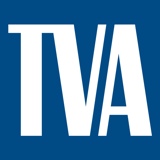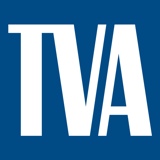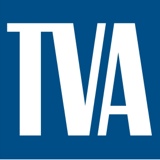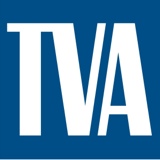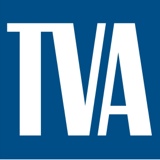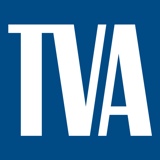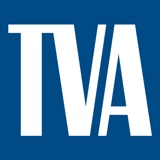Information
-
Document No.
-
Audit Title
-
Client / Site
-
Conducted on
-
Prepared by
-
Location
-
Personnel
WHAT ARE WE GOING TO DO?
-
TIME BRIEFING CONDUCTED / RECONDUCTED:
-
Are the procedures and work scope understood?
-
Are there written Job Safety Analysis (JSA) for this activity? If YES then list!
-
If this job meets the definition of a high hazard job, then a JSA must be used in conjunction with this checklist for the Pre-job briefing.
-
JSA #'s :
-
Have the Foreman / lead-person and crew/team analyzed the work assignment for safety hazards?
-
Are the roles of the workers/task leader identified?
-
For energized (HOT) Work: the "Manager's Checklist for Energized Work" shall be completed.
-
DAILY DISCUSSION:
WHAT IS THE WORST THING THAT COULD HAPPEN?
-
Have the safety hazards been identified and ways to control these hazards discussed for each task?
-
Have the electrical clearance procedures been discussed?
-
Have Safety Grounding Procedures been discussed, including the hazards of induced voltage?
-
Have other safety considerations been identified and discussed?
-
Is there a significant potential for personnel injury?
-
Are Rescue plans in place: Means of contacting emergency agencies, a list of phone numbers, and a description of worksite locations? Police, Fire, emergency numbers posted?
-
Have there been additional discussions held about significant changes, which might affect safety, occurring during the course of the work being performed?
-
Have minimum approach distances to energized lines and equipment been discussed?
-
DAILY DISCUSSION:
WHAT ARE THE CRITICAL STEPS?
-
What actions could result in impacts to the transmission system if an accidental contact should occur to an energized circuit?
-
What steps could result in exposure of individuals to hazards?
-
DAILY DISCUSSION:
WHAT ARE WE GOING TO DO,ESPECIALLY AT THOSE CRITICAL STEPS, TO MAKE SURE THAT A MISTAKE DOESN'T HAPPEN?
-
Insured that communication lines where clearly understood.
-
Insured that a work plan or procedure was in place? If YES list below or NO explain.
-
WorkPlan # or Reason for NO written plan?
-
Identified the barriers or defenses to be depended on?
-
Time Out (understood to STOP when unsure).
-
Reminded the crew that all TVA Safety Manual requirements including Energy Delivery Safe Work Practices are to be followed at all times.
-
All procedures are to be followed as written or are to be revised first. (not to proceed if procedures are not accurate)
-
Identified the criteria for suspending work activities?
-
DAILY DISCUSSION:
WHAT ARE THE ERROR-LIKELY SITUATIONS?
-
Is there a potential for distractions and if yes? How will the be Minimized?
-
Is this a first time job function being performed?
-
Is this the first working day after days off?
-
Are there other error precursors (task demands, work environment, individual capability, human nature?
-
Are procedures new or recently revised?
-
Are personnel familiar with the task?
-
Has time / schedule / out-of-service time been considered?
-
DAILY DISCUSSION:
WHAT ARE OUR SAFETY CONCERNS?
-
Clearance-boundaries have been walked down and discussed with the team members?
-
Special electrical equipment (glow stick, mats, high voltage gloves, grounds, jumpers, for outdoor / conductive environments)?
-
Adequate scaffolding / ladders / rigging available and in proper working order? (including all annual inspections)
-
Have all environmental, chemical and health related hazards been identified and appropriate actions taken?
-
PPE (hard hats, safety glasses, fall protection equipment, gloves hearing protection, face shields and Fire Retardant clothing) available for use as required?
-
High temperature extremes and potential employee exposure discussed?
-
If you have Asbestos material is it properly identified and are proper work methods in place? (only trained employees are to handling asbestos)
-
Do you have any identified or potential Confined Spaces to enter and are proper precautions being taken? (Confined Space training required for entry)
-
DAILY DISCUSSION:
OPERATING EXPERIENCE ( related industry events either internal or external to TVA)
-
Discussed applicable recent industry events and/or Lessons Learned?
-
DAILY DISCUSSION:
GENERAL
-
Are the performers task qualified to do the task and are they current?
-
Are the proper tools available to perform the task(s)?
-
Is inspected rigging equipment available and has the proper right equipment been selected to perform the task(s)?
-
Is proper flagging material available for use and application identified?
-
Have we considered housekeeping, area cleanliness, and posting requirements for the job?
-
Are aerial lifts, cranes, forklifts, bucket trucks and other such equipment being inspected and documented at least daily before use?
-
Are there any special requirements associated with this work activity?
-
Are all Hold Orders, Caution Orders or other points of clearances been obtained & In place before performing this activity? If YES list.
-
HOLD ORDER #
-
Are Qualified personnel available to perform Hold Points?
-
Are all Hot Sticks and Protective Safety Grounds in good working order with proper annual inspection identification on them?
-
Is there sensitive equipment in the area that needs to be considered before, during and/or after the work activity?
-
Are there limitations on radio and cell phone use before, during and/or after this work activity'
-
Have issues related to the environment been discussed? (weather, terrain, time-of-day, dust, noise, lighting etc.).
-
DAILY DISCUSSION:
-
Responsible Foreman/Supervisor/Employee Conducting Briefing: RETAIN 30 Days or until the work order/package is closed.
-
ATTENDEES initial:






